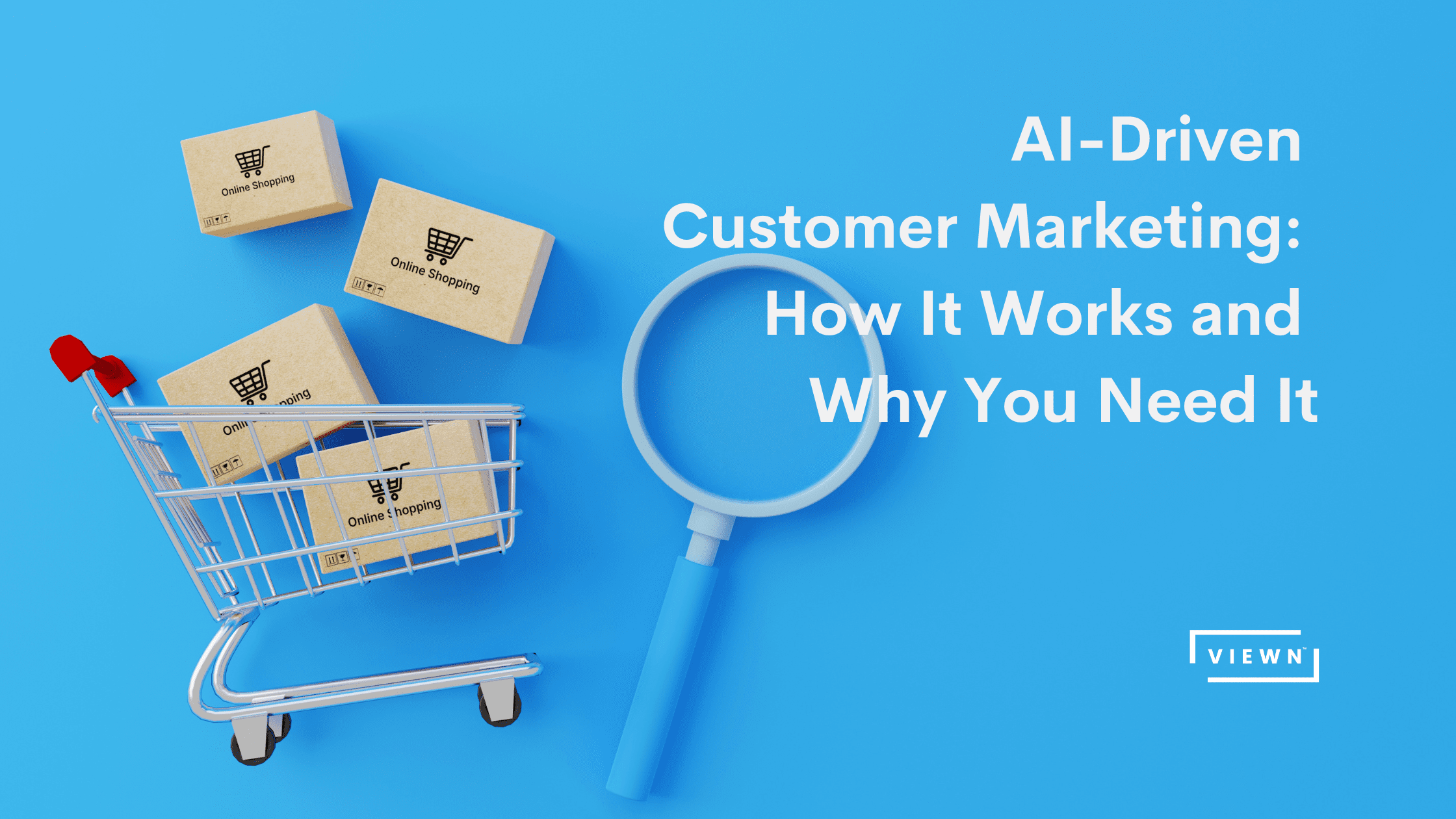To have a successful business, you need to focus on customer marketing. This involves gathering customer data and using it to improve your marketing strategies. Many businesses now use AI-driven customer marketing models, which effectively increase conversions. This blog post will discuss how these models work and why they are important for businesses. We will also provide examples of how some companies are using them successfully. So if you’re interested in learning more about AI-driven customer marketing, read on!

Data is the new oil; thus, customer data can provide rich insights about how and where to grow revenues. Customer information can be collected in various ways, such as through surveys, website clicks, and forms. Collecting this data is important because it can give insights into your customers’ behavior. For example, you may notice that certain customers are more likely to purchase after visiting your website for a certain amount of time. Or you may find that customers who live in a certain area are more likely to be interested in your products.
This data is useless, however, unless you have a way to analyze it and use it to improve your marketing strategies and scale it to the 10s of thousands of customers of a direct-to-consumer brand. This is where AI comes in. AI-driven customer marketing models use machine learning techniques to analyze customer data and identify patterns. This information can then improve your marketing campaigns and increase conversions.
There are several different ways that companies are using these models successfully. For example, some businesses are hooking prediction engines to their customer data platforms (CDP) to keep churn under control. Others are using clustering models to identify unique factors amongst a segment. And still, others are using AI to create more personalized customer experiences.
The new super-charged Segmentation Targeting Positioning
The common marketing strategy in today’s environment is Segmentation, Targeting, and Positioning (STP). Customer-centric marketing methods are on the rise over product differentiation techniques. For example, the audience-oriented approach to marketing aids in delivering more relevant and targeted communications to economically significant segments. STP synergizes with marketing personas because it is a part of the persona concept.
The practice of segmentation stems partly from previous CRM and ad-tech limitations and a reliance on human decision-making in the STP process. Thanks have changed with advanced computerization. Most systems were previously able to manage a smaller number of segments. Therefore, targeting was restricted to broad audience segmentation. Marketers need more refined segments to build personalized content- not broad audiences.
Many geographic, demographic, psychographic, and behavioral data are available to create rich and meaningful audience segments or marketing personas. However, we often prioritize geographic, demographic, and psychographic data over behavioral data when creating segmentations. Additionally, we usually assign more or less discrete labels to our segments.
Segmentation is always developing and shifting, especially with the recent advances in marketing systems and technology. CRMs, CDPs, and DMPs focus on a customer’s propensities rather than the discrete segments they may fall into. Additionally, AI has enabled it to extract psychographic information from big data sets and behavioral data instead of relying on traditional methods like geographic or demographic information.
Use behavioral data for STP
Data is a business’s greatest asset, and data scientists can process vast amounts of it to extract subtle signals. This enables us to explore innovative use cases but also helps scale them so that we can automate processes along the way too! Behavioral metrics like click-streams or event logs from your eCommerce website give important insights into customer needs–and machine learning extracts these factors automatically without needing direct input.
To get started using behavioral data for segmentation, you need to translate your click-stream into a selection of relevant dimensions and their values. A great way to find these dimensions for STP is to have your data scientists use the math behind recommendation engines and apply it to a user-product interaction matrix.
What makes using AI to make personas hard
This kind of thinking in separate personalities is quite appealing to marketers and decision-makers, but it is ultimately flawed and limiting, as will every attempt to model reality. Here are a few examples of how this approach might backfire:
Depends heavily on personal data with growing restrictions and declining consent levels. And customers are choosing privacy, as seen once Apple introduced privacy settings per app on the iPhone. Privacy is a big deal- 83% of consumers surveyed by Salesforce said they are concerned about sharing personal data online, and 72% said they would stop buying from a company or using a service because of privacy concerns.
Geographic, demographic and psychographic data is usually sparsely available for a user base and of very mixed quality. It isn’t easy to make a coherent and clean data set to analyze and get real customer insights. Not enough clean data is a true killer.
Managing personas that are difficult to scale, refresh and automate will require ongoing resources to manage. As campaigns need adjustment, people always react to the market and geo-political climate changes.
Through data science alone, there is no associated weight of importance or relevance for the different characteristics of a persona measuring the results will be art.
Despite some of these limitations with new dynamic marketing models, the data-driven approach is the way to go because it scales easily, doesn’t require any more input than you already have, and can be used for many other problems like clustering or predictions.
It’s entirely based on your first-party data, which is data provided by your customers. The only downside is that your customer’s attributes are now machine-understandable but not directly human-interpretable.
Do you have any questions about AI-driven customer marketing? Let us know in the comments below! We would be happy to answer them. Thanks for reading!



